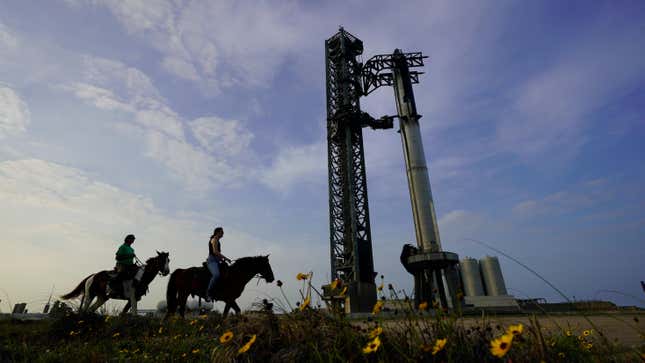
SpaceX’s Starship rocket could sound nice in concept, particularly if you happen to consider Elon Musk goes to get humanity to Mars in the future (if he’s not nonetheless too busy blaming the Jews for the drop in Twitter’s advert income) however the final launch didn’t precisely go properly. Along with blowing up, it additionally precipitated an unbelievable quantity of environmental harm, abandoning a 385-acre particles area and inflicting a 3.5-acre fireplace. Understandably, the Federal Aviation Administration would actually choose it if SpaceX didn’t try this once more.
The FAA introduced final Friday that it had closed its investigation and had recognized “63 corrective actions SpaceX should take to forestall mishap reoccurrence,” CNET experiences. These embrace “redesigns of auto {hardware} to forestall leaks and fires, redesign of the launch pad to extend its robustness, incorporation of further evaluations within the design course of, further evaluation and testing of security essential programs and elements together with the Autonomous Flight Security System, and the appliance of further change management practices.”
As soon as all of that has been taken care of, SpaceX will reportedly have to use for a modified license and be cleared by the company to launch the Starship rocket. However whereas 63 corrective actions could sound like a listing that will take a very long time to finish, SpaceX might be so much nearer to being able to launch than you would possibly assume. On Sunday, Musk tweeted that 57 of the 63 objects had already been accomplished.
SpaceX has additionally launched a press release, saying:
Testing improvement flight {hardware} in a flight surroundings is what allows our groups to shortly study and execute design modifications and {hardware} upgrades to enhance the chance of success sooner or later. We discovered an amazing quantity concerning the car and floor programs throughout Starship’s first flight check. Recursive enchancment is crucial as we work to construct a totally reusable launch system able to carrying satellites, payloads, crew, and cargo to quite a lot of orbits and Earth, lunar, or Martian touchdown websites.


